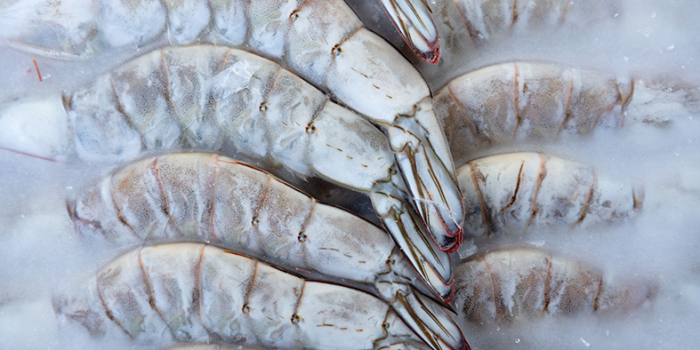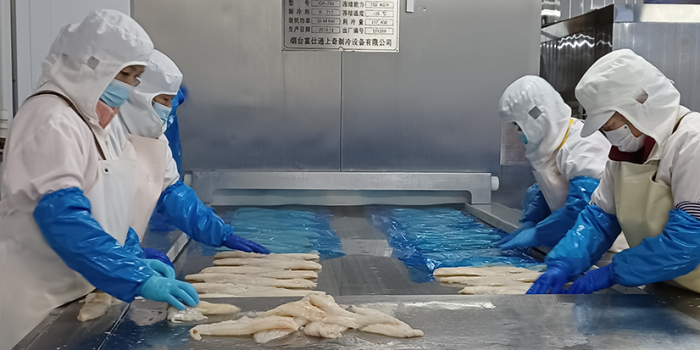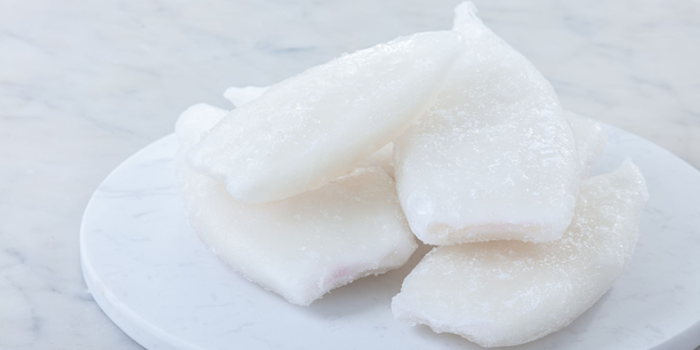Are you paying for frozen water or fish? Do you know how much your fish glaze is actually costing you?
We caught up with Michael Hansen, our Head of Purchasing for Frozen Seafood, for his expertise on glaze and how it affects our seafood.
What is the glaze on frozen fish?
Glaze is frozen water, creating an icy protective layer surrounding the seafood.
Why is it necessary and what happens if we don’t use glaze?
We use glaze to protect the seafood and avoid damage to the appearance and texture of the product.
If it didn’t have glaze, the flesh would be exposed and cause damage to the fish during transportation.
As well as avoiding damage from packaging, seafood that is exposed to frozen temperatures for too long can get frostbite – this is evident when you see very white areas of the fish.
Glazing helps delay this process and protect the product, keeping it in its best condition until ready for consumption.

Is anything else added to glaze other than just water?
No, just water. The water will go through a cleaning process to make it suitable for glazing.
Where does the glazing take place? How is it added?
The glazing process happens at the country of origin and involves dipping or spraying frozen seafood products. This process can be repeated depending on the % level of glaze needed.
The process needs to comply with CODEX standards to ensure it is safe and maintains quality.
Are there differences in the glaze levels?
The minimum level of glaze to give optimum protection is around 10% of the weight, protecting the product from damage and risk of frostbite. Different products require a different level of glaze.
Is there a maximum amount of glaze allowed?
There is no legal maximum for amount of glaze that can be used, but higher levels of glaze can mislead customers into believing they are getting more product.

Does it affect the quality, taste or flavour of the product?
No, it doesn’t affect the taste or flavour, but the more the product is handled, the more risk of damage.
Does it add to the weight of the product?
Yes, glazing adds weight to the product.
How do I know how much of the product weight is fish or glaze?
The deglazed weight or ‘net weight’ is the true amount of frozen product once the glaze is removed. Gross weight will refer to the product weight including glaze.

What do Direct Seafoods do?
We apply different glaze levels to products based on industry standards, and use trusted suppliers who deliver great quality products.
We want our customers to know how much product they are receiving when ordering from us, so we state the net weight of our products in the description in the majority of cases, including squid, shrimp and prawns. This gives total transparency as to the amount of seafood that will be supplied.
Beware of any lines that state ‘1kg’ in the product description. For the reasons stated prior, it is highly unlikely you will receive a 1kg bag with 1kg net weight as protective glaze is needed for frozen product. Not only should customers check how much frozen water they are paying for by looking at the packaging, they should also consider how this also affects the true price.
Fish fillets are the exception, where we state gross weight.
Is there any advice you’d give when buying glazed frozen fish?
When you are purchasing frozen fish, be sure to calculate the product glaze based on net and gross weights to check that prices are comparative. Products that appear cheaper could have a higher % glaze and no-one wants to pay for frozen water!
Also look out for white frostbites on parts of the fillet – that is where the protective glaze has failed or there wasn’t enough glaze.
For further information on glazing, visit Seafish.org
Our team are on hand to support you and discuss your requirements in order to provide the best fresh ingredients for your dishes.
Follow us on social media for regular updates on Instagram, LinkedIn, X and Facebook



